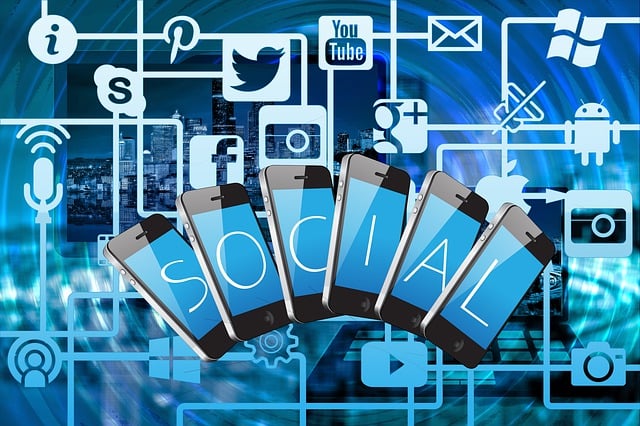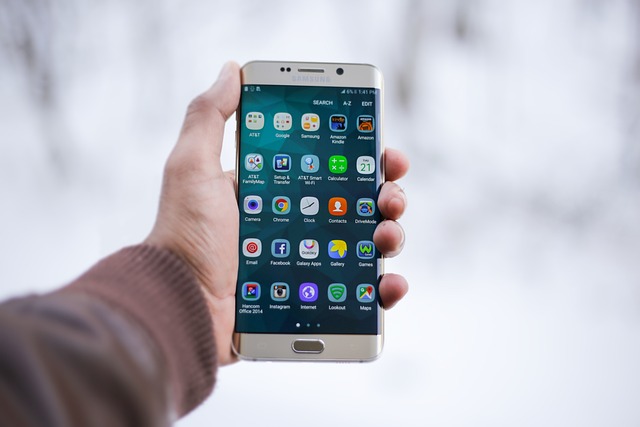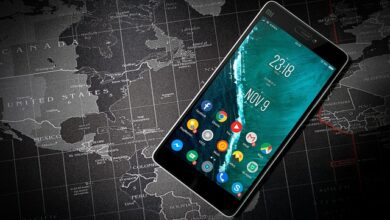Biometric Authentication: The Future of Identity Verification

Imagine a world where your unique physical traits become the key to unlocking secure access to your personal information. Sound like something out of a sci-fi movie? Well, it’s not. Welcome to the era of biometric authentication, the cutting-edge technology that is revolutionizing identity verification.
So, what exactly is biometric authentication? Simply put, it is a method of verifying an individual’s identity based on their biological and behavioral characteristics. Instead of relying on traditional passwords or PINs, this futuristic approach harnesses the power of our own bodies to grant access to sensitive data and secure locations.
One of the most widely recognized and utilized forms of biometric authentication is fingerprint scanning. Just like each person has a unique set of fingerprints, no two individuals share the same pattern. By capturing and comparing the ridges and valleys on a person’s fingertip, biometric systems can verify their identity with remarkable accuracy.
But fingerprints are just the tip of the iceberg. Biometric authentication goes beyond our fingertips to include various other features such as facial recognition, iris scanning, voice recognition, and even DNA matching. Each of these methods offers its own distinct advantages when it comes to ensuring foolproof identity verification.
Think about it—your face is as unique as a snowflake. Facial recognition technology analyzes key facial features, such as the distance between eyes, shape of the nose, and contours of the jawline, to create a digital signature unique to you. This makes it an incredibly reliable method for confirming identity, even in real-time scenarios like airport security checks or access control at high-security facilities.



Another fascinating aspect of biometric authentication is voice recognition. Just like your fingerprint, your voice has its own distinctive characteristics. By analyzing factors like pitch, tone, cadence, and pronunciation, voice recognition systems can accurately verify your identity. The best part? You don’t need any fancy gadgets—your smartphone or computer can do the trick.
Biometric authentication is paving the way for a future where identity verification is seamless and secure. By harnessing the power of our unique biological traits, we can bid farewell to the hassle of remembering passwords and worrying about stolen identities. With fingerprint scanning, facial recognition, voice recognition, and other emerging technologies, the possibilities are endless. So, embrace the future—your identity is now in the palm of your hand, quite literally!
Breaking Boundaries: How Biometric Authentication is Revolutionizing Identity Verification
Have you ever imagined a world where your unique physical traits serve as your passport to access information and authenticate your identity? Well, the future is here, and it’s called biometric authentication. In this digital age, where security breaches and identity theft are rampant, traditional methods of identification and authentication have proven to be insufficient. Enter biometric authentication, a game-changing technology that is revolutionizing the way we verify identities.
So, what exactly is biometric authentication? It’s a method of verifying an individual’s identity based on their unique biological characteristics. These characteristics can include fingerprints, iris patterns, facial features, voiceprints, and even the way you walk. Unlike passwords or PINs, which people can forget or hackers can crack, biometric data is incredibly difficult to replicate or forge.
One of the most common applications of biometric authentication is in unlocking smartphones. Gone are the days of using passcodes or patterns; now, your fingerprint or facial scan is all you need to gain access to your device. This not only provides convenience but also enhances security, as each person’s biometric data is inherently unique.

But it doesn’t stop there. Biometric authentication is making its way into various industries, including banking, healthcare, travel, and law enforcement. In the banking sector, for example, fingerprints or iris scans can be used to authorize transactions, eliminating the need for cumbersome passwords or signature verifications. Similarly, in healthcare, biometrics can ensure that only authorized personnel have access to sensitive patient information, protecting patient privacy.
Biometric authentication is also being embraced by airports and immigration authorities. By using facial recognition technology, airports can expedite the boarding process, making travel more efficient and secure. Law enforcement agencies are leveraging biometrics to identify suspects quickly and accurately, aiding in solving crimes and ensuring public safety.
The benefits of biometric authentication are clear. It provides a higher level of security, enhances user experience by eliminating the need for passwords, and reduces the risk of identity theft. However, it’s not without its challenges. Privacy concerns and the potential for misuse of biometric data are legitimate issues that need to be addressed.
Biometric authentication is breaking boundaries and revolutionizing identity verification. Its ability to uniquely identify individuals based on their biological traits has opened up a world of possibilities across various industries. As technology continues to advance, we can expect biometric authentication to become even more prevalent, transforming the way we prove who we are and ensuring our digital lives remain secure.
Unlocking the Future: Biometric Authentication Sets New Standards for Secure Access
Have you ever imagined a world where your unique biological traits grant you access to your personal devices, secure facilities, and online accounts? Well, the future is here, and it’s called biometric authentication. This groundbreaking technology is revolutionizing the way we protect our valuable information, replacing traditional passwords and PINs with our very own physical attributes.
So, what exactly is biometric authentication? It’s a security process that uses distinctive human characteristics such as fingerprints, iris patterns, voice recognition, or even facial features to verify a person’s identity. By leveraging these one-of-a-kind traits, biometric authentication offers an unprecedented level of security that is difficult to replicate or forge.
One of the most widely adopted forms of biometric authentication is fingerprint scanning. Just like no two snowflakes are alike, each person’s fingerprint is unique. By simply placing your finger on a sensor, sophisticated algorithms analyze the ridges and patterns, matching them against a stored database. In an instant, you gain access to your smartphone, laptop, or any device protected by this technology.
But it doesn’t stop there. Facial recognition takes biometric authentication to a whole new level. Imagine staring at your phone’s front camera, and within milliseconds, it recognizes your face and grants you access. This futuristic feature not only adds convenience but also enhances security measures, making it extremely challenging for impostors to breach your digital fortress.
Voice recognition is yet another exciting development in biometric authentication. Your voice possesses distinct characteristics, from the cadence and pitch to the timbre and intonation. Using advanced algorithms, your voice can be mapped and compared to a pre-registered sample, ensuring that only your unique vocal patterns allow access to sensitive information.
Biometric authentication sets new standards for secure access by eliminating the vulnerabilities associated with traditional passwords. Unlike alphanumeric codes that can be guessed or stolen, your biological traits cannot be easily replicated or shared. Biometric data is personal, inherent, and virtually impossible to fake, making it an ideal solution for safeguarding our digital lives.

The future of secure access lies in biometric authentication. With its ability to harness the power of our unique biological attributes, this innovative technology provides a level of security that surpasses traditional methods. Whether through fingerprint scanning, facial recognition, or voice authentication, the possibilities are endless. So, get ready to unlock an era where your own biological identity becomes the key to a safer and more convenient world.
Biometric Breakthrough: The Rise of Facial Recognition in Identity Verification
In today’s digital age, where security and identity verification are paramount concerns, a remarkable technological advancement has emerged: facial recognition. This biometric breakthrough has revolutionized the way we authenticate our identities, offering a seamless and secure solution in various industries.
Imagine a world where you no longer need to remember numerous passwords or carry multiple identification cards. Facial recognition simplifies the process by capturing unique facial features and mapping them to an individual’s identity. It’s like having your face as your personal key to access restricted areas or verify transactions.
The rise of facial recognition in identity verification brings immense benefits to sectors such as banking, law enforcement, and border control. Take the financial industry, for instance. With facial recognition, banks can now offer their customers a faster and more secure authentication process. Gone are the days of waiting in line or answering countless security questions. Simply look into a camera, and within seconds, your identity is verified, granting you access to your accounts.
Law enforcement agencies are also leveraging this technology to enhance public safety. Facial recognition systems can match faces captured on surveillance footage with a database of known criminals, aiding in investigations and preventing potential threats. By swiftly identifying individuals, law enforcement can respond more efficiently and effectively, ensuring the safety of communities.
Moreover, facial recognition plays a crucial role in border control. Airports and immigration authorities around the world are implementing facial recognition systems to expedite passport checks. Instead of presenting physical documents, travelers can now simply have their faces scanned, reducing congestion and improving overall travel experience.
While the rise of facial recognition in identity verification offers remarkable convenience and efficiency, it also raises concerns about privacy and security. Critics argue that storing biometric data poses risks, as any breach could compromise individuals’ personal information. Striking the right balance between convenience and privacy remains a challenge, requiring robust regulations and safeguards.
Facial recognition represents a significant leap forward in identity verification. Its widespread adoption across various sectors has streamlined processes, enhanced security, and improved user experiences. However, as we embrace this technology, we must address privacy concerns and ensure that proper safeguards are in place. With further advancements and responsible implementation, facial recognition has the potential to reshape how we verify our identities in a world increasingly driven by digital interactions.
Beyond Passwords: Biometric Authentication Paves the Way for Seamless Security
In this digital age, where our lives are increasingly intertwined with technology, ensuring robust security has become more crucial than ever before. Traditional password-based authentication methods are no longer sufficient to protect sensitive information, leading to an urgent need for a more secure and seamless solution. This is where biometric authentication comes into play, revolutionizing the way we safeguard our digital assets.
Imagine a world where you can unlock your smartphone or access your bank account with just a touch of your finger or a quick glance at your face. Biometric authentication makes this possible by utilizing unique physical or behavioral traits that distinguish one individual from another. These characteristics, such as fingerprints, iris patterns, facial features, or even voice recognition, serve as the key to granting access to personal devices and sensitive data.
The beauty of biometric authentication lies in its simplicity and convenience. Unlike passwords, which are easily forgotten or prone to being hacked, our biometric features are inherently difficult to replicate or forge. Each person’s biometric signature is distinctive, making it highly secure and virtually impossible to fake. With biometrics, there are no more concerns about weak passwords or the hassle of constantly changing them.
Moreover, biometric authentication offers a seamless user experience. Gone are the days of typing complex passwords on tiny keyboards or remembering various login credentials for different accounts. With a simple touch or glance, biometric sensors quickly and accurately verify your identity, granting you immediate access. This not only saves time but also enhances user satisfaction, eliminating the frustration associated with traditional authentication methods.
Beyond personal devices, biometric authentication holds immense potential for numerous industries. From banking and healthcare to travel and government services, organizations can implement biometric systems to ensure secure transactions, protect sensitive information, and prevent unauthorized access. This technology provides a level of security that was previously unattainable, mitigating risks and fortifying the digital landscape.




